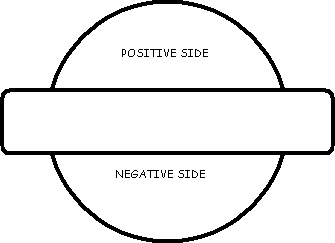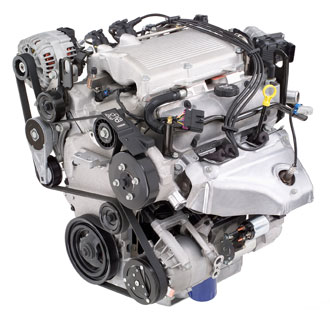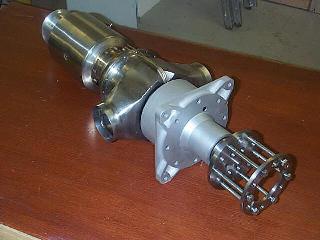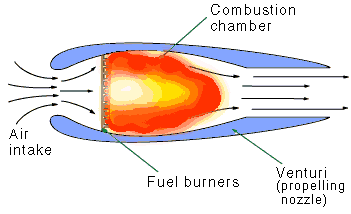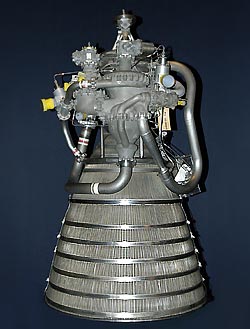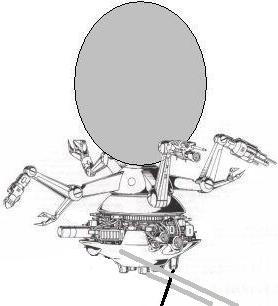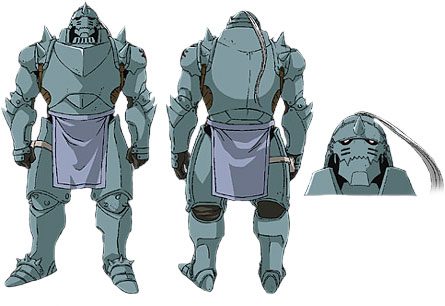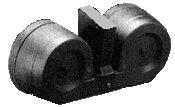 UGC Clariont Flag. |  UGC Clariont Flag. | |||||||||||||||||||||||||||||||||||||||||||||||||||||||||||||||||||||
|---|---|---|---|---|---|---|---|---|---|---|---|---|---|---|---|---|---|---|---|---|---|---|---|---|---|---|---|---|---|---|---|---|---|---|---|---|---|---|---|---|---|---|---|---|---|---|---|---|---|---|---|---|---|---|---|---|---|---|---|---|---|---|---|---|---|---|---|---|---|---|
Neocell Hydro-Cell Generator Faster-Than-Light (FTL) Drives Tractor Drives Tractor/Repulsar Beam Extended Terrain Navigation and Detection Robot (XTNDR) Pod | Standard Infantry Grip Points E-Canisters Barrier Shields and Fields Damage Tracking Systems Techonlogies That Do Not Exist. | |||||||||||||||||||||||||||||||||||||||||||||||||||||||||||||||||||||
| ||||||||||||||||||||||||||||||||||||||||||||||||||||||||||||||||||||||
Dimensions: Per buyer's request. Weight: 0.001 pound per square foot surface area. Power Systems: None; N/A. Cost: 100 credits per square foot area. Availability: Generally always. | ||||||||||||||||||||||||||||||||||||||||||||||||||||||||||||||||||||||
TYPES AND USES: Automobile Engines: Typically used on ground vehicles. Turboprop Engine: Used on most in-atmosphere capable small craft, armored vehicles, and occasionally civilian ground vehicles. Hydrocell Jet/Scramjet Engines: Typically used in aircraft requiring greater thrust and aero-spacecraft. The difference between a pure jet and Dual-Phase jet is that a Dual-Phase jet has a "shutter" and air-injector system allowing them to be used in space; However, dual-phase craft require air tanks to be carried nonetheless. Hydrocell Rockets: Typically used in spacecraft, and on shuttles for take-off (even grav pod equipped shuttles require thrust for maneuvering if nothing else; most civilian craft also require the thrust for speed purposes). Not typically used in air and aero-spacecraft, since rockets can not take in fresh air (must carry its own air all the way), which limits range. Dimensions: Varies by type used; Generally about 0.015 inch per horsepower. Weight: Varies by type used; Generally about 0.3 pound per horsepower. Power Systems: Internal; Uses Hydrogell as fuel (sold by millions of companies). Cost: Varies by type used; Generally about 200 credits per horsepower. Availability: Always. Fuel Cost: Varies, from 2.03 credits to 5.09 credits per pound (each pound gives about 50 miles of transit). Uses Hydrogell as fuel, which is sold by millions of companies. Fuel Availability: Virtually ALWAYS; For autos, one can rarely go more than 100 miles without reaching a fuel station. Space stations also can fuel ships without any difficulty. | ||||||||||||||||||||||||||||||||||||||||||||||||||||||||||||||||||||||
| ||||||||||||||||||||||||||||||||||||||||||||||||||||||||||||||||||||||
| ||||||||||||||||||||||||||||||||||||||||||||||||||||||||||||||||||||||
Type: Sensory Pod Effect: Extends range of any sensors 10 times (or defeats other penalties in a 5 mile area). Crew: N/A Passengers: N/A M.D.C. By Location: | ||||||||||||||||||||||||||||||||||||||||||||||||||||||||||||||||||||||
| Pod Fiber Optic Cable | 50 10 | Balloon | 10 | |||||||||||||||||||||||||||||||||||||||||||||||||||||||||||||||||||
| Flying: Free-float only. Range In The Air: 200 hours. Can NOT be refilled while in the air (unless tethered). Service Ceiling: 30,000 feet; Can be stopped at any time by operator, or by getting hung up in trees. Height: 25' Diameter At Base: 27' Diameter Around the Balloon: 22' | Weight: 1 ton. Powerplant: None; Draws all power from a ground station. Flight System: Helium balloon. Thrust System: None; Drifts with the wind. Cost and Availability: 25,000credit each; About a million are produced annually. Black Market Cost and Availability: About 30,000credit each; Routinely available, but may take "a couple of days." | |||||||||||||||||||||||||||||||||||||||||||||||||||||||||||||||||||||
| 1. Silvrite Laminar Armor: Halves all laser attacks. Purpose: Defense. Effect: All lasers do 1/2 damage. Range: Self. Coverage Characteristics: A full 360 degree area; Includes balloon. 2. Radar/Radio Antenna Array: Purpose: Communications. Effect: Maintains full-time laser encrypted comms with a satellite or ship in orbit and/or a ground station via an MRA-6 SatLink. Range: 100 miles fairly nominal; 1,000 miles with SSRA Radio Booster Array (coms standard with each unit, but is not installed at factory). Coverage Characteristics: A full 360º area; Includes balloon. 3. Magnetic resonance imaging (MRI) Array: Literally strips away the world; Protons inside a nucleus spin on their axes, producing a magnetic field. A focused magnetic field aligns the moment of the nuclei. The nuclei are then made to resonate by focused radio energy (not powerful enough to harm anything, but may be uncomfortable at close range, say less than 10 feet unshielded). The resonances are detected by the receiver; This data is sent to a processor which transforms the data into images of the desired area, processing the information and creating an image. An interesting feature of MRI imaging is that flowing things have a distinctive appearance on MRI scans (similar to Doppler ultrasound). Flowing structures cause "flow voids," which appear as black holes on the scans. These areas are usually short-lived, however, or are easily filled-in by the possessor. Purpose: Sensory. Effect: Strips away all coverage. Range: 2,000 ft. Coverage Characteristics: 1002 ft coverage area. 4. Hardened Circuits: The electronics on board are unaffected by EMPs or scramblers. Purpose: Defense. Effect: EMPs, even military grade ones, have no effect. Ators are known to have such weapons. Range: On board. Coverage Characteristics: All on-board electronics. 5. Magnetic Shields: A magnetic shield beyond the Full-Force Barrier Field disperses ion and particle beams and befuddles missile electronics. Purpose: Defense. Type: Shield. Effect: All particle beams do 1/2 damage; Missiles have a 30% chance of being confused and missing; Ion beams are also diminished: Roll normal effect +10%; If restricted, ship is sluggish, not DIS. Range: 350 feet beyond the craft. Effective Against: Particle and ion beam and missiles only; Lasers are unaffected, as are other weapons. Coverage Characteristics: A full 360 degree coverage area around the craft. 6. SSRt-256 Infra-Red Detection Systems: The XTNDR Pod has SEVERAL layers of IR sensing, covering all 6 sectors with half-coverage of adjoining sectors. Purpose: Detection, Identification, and Tracking. Sensor Type: IR. Effect: Detects all IR sources inside the effective coverage area. Range: 100,0003 miles. Minimum Target Characteristic: Any IR source, regardless of characteristics. Coverage Characteristics: A full 360º coverage. 7. Optic Sensors Systems: The craft is equipped with sensors far greater than normal combat aircraft sensors. NOTE: These sensors on this craft is actually GREATER than those on spycraft. Purpose: Detection, Identification, and Tracking. Sensor Type: IR. Range: 20 miles Magnification: 30 times Minimum Target Characteristic: Not applicable. Coverage Characteristics: Full 360º coverage area, with secondary focusing direct viewing. Magnification: 25 times Purpose: Detection, Identification, and Tracking. Sensor Type: UV. Range: 22 miles Minimum Target Characteristic: 00,000 Coverage Characteristics: Full 360 degree coverage area, with general viewing only. Magnification: 8 times Purpose: Nighttime visibility. Sensor Type: IR. Effect: Allows the operator to see as if in daylight, if late in the afternoon; The picture is full natural color. Range: 24 miles Minimum Target Characteristic: 00,000 Coverage Characteristics: Direct viewing only. Magnification: 200 times Purpose: Detection, Identification, and Tracking. Sensor Type: Color filtration. Effect: Filters out selected colors; only the primary colors red, blue, and yellow can be filtered, and purple, green, and orange will see be seen as more of the viewable color. Range: N/A. Minimum Target Characteristic: Based on color only. Coverage Characteristics: Toggles to the optic systems. Magnification: 40 times Purpose: Detection, Identification, and Tracking. Sensor Type: Thermal. Range: 50 miles Minimum Target Characteristic: Can see from -400 degrees (essentially "Absolute zero") to 50,000 degrees (outer stellar range) Fahrenheit. Coverage Characteristics: Full 360 degree coverage area, with secondary focusing direct viewing. 8. Westinghouse RT/SKI-17 Multi-Phase S-Band Phased Array Doppler Surveillance Radar: An advanced multi-phase S-band phased array Doppler-effect based radar array; The system has the capability of scanning in both elevation as well as azimuth and thus can revisit targets; It can simultaneously operate in both low-PRF pulsed modes to enable the detection long-range targets beyond the horizon and high-PRF modes to detect all-altitude targets out to the radar line of sight. However, this is the general viewing/wide angle radar; Not very sensitive, it can still cover large areas for follow-up by the SR/AR-225. Purpose: Detection, Identification, and Tracking. Sensor Type: Radar. Effect: Sees all radar-reflective objects within its coverage sphere. Range: 10,000 miles; However, in space, even this kind of range allows a LOT of area to watch. Minimum Target Characteristic: Anything with a radar-active base; This includes aircraft, ground vehicles, comets, asteroids, and etc. Coverage Characteristics: A sphere of 10,0003 miles. | 9. Westinghouse SR/AR-225: An electronically-scanned conformal antenna in what was a spot weld overview camera eye. The system views a specific area of about 102 miles at it's maximum range of 10,000 miles much more intensely than the RT/SKI-17, giving it a focused but intense picture of the targeted object. The system can be togged to the RT/SKI-17 for tracking purposes by the operator, preventing an object from moving out of the viewed area. Purpose: Detection, Identification, and Tracking. Sensor Type: Radar Effect: Sees all radar-reflective objects within it's observed area; NOTE: This system can be pinpointed to a given desired area. Range: 10,000 miles. Minimum Target Characteristic: Anything with a radar-active base; This includes aircraft, ground vehicles, comets, asteroids, and etc. Coverage Characteristics: 10,000 miles; NOTE: This system is unidirectional, not omni-directional, and due to the mounting can only view UNDERNEATH the pod. 10. Radar Detection/Warning Receiver: Providing all aspect broadband protection from RF guided missiles. Purpose: Detection, Identification, and Tracking. Sensor Type: Radar detector. Effect: Detects all radar signals contacting the craft, even if the signal is too weak to successfully return to point of origin. Range: Surface of craft. Minimum Target Characteristic: Any radar signal. Coverage Characteristics: A full 360º area. 11. STT-K Video Radio Communications Array: Long range, directional communications system with satellite relay capabilities. Purpose: Communications System Type: Radio Effect: Carries video signals. Range: 600 miles, or can be boosted indefinitely via satellite relay. Minimum Target Characteristic: Not Applicable. Coverage Characteristics: A full 360º area. 12. Thomson DCS-2,500 Multi-Band Digital Camera System: For medium range traversable UV, infra-red imaging and optical band detection and tracking. The presence of this system has led to EC-33's being used as air and space born telescopes in cooperation with universities and other institution (makes for a good training mission). Purpose: Observation and recording. Sensor Type: Visual. Range: 2,000 miles. Minimum Target Characteristic: UV, IR, and color-band wavelength objects. Coverage Characteristics: A full 360º viewing area; Magnification is up to 20,000 times . 13. Thomson SRT-305/400 Multi-Frequency Laser Ranger And Designator: This relatively antiquated system is kept as a back-up option as a laser target designator; It's abilities include laser range finding. Purpose: Target Designation And Range Finding. Sensor Type: Laser. Effect: Can identify the range and page a target up to maximum range of 2,000 miles. Range: 2,000 miles. Coverage Characteristics: A full 360º area. 14. Tourette's TS-42/19 Forward And Side Looking Infra-Red (FLIR/SLIR): Full time forward and side looking infra red system. Mostly used on Search And Rescue missions. Purpose: Infra-red detection. Sensor Type: FLIR/SLIR. Range: 500 miles active, unlimited passive. Minimum Target Characteristic: Any infra-red. Coverage Characteristics: A cone of 360 degrees around the craft, and from 000 degree aft to 135 degree. 15. Grumman QCR-842 Infra-Red Jammer: An active infra-red jamming system that "floods" the surrounding area with false IR image; Appears on IR sensors as a big, semi-fluid glob. Purpose: IR jamming. System Type: Defensive. Effect: Creates semi-fluid glob of approximately 1003 miles. Range: Approximately 1003 miles. Coverage Characteristics: A full 360º area. 16. Griger-200RT Active Missile Jamming System: Creates several different fields of false active and misleading signals that missiles then fall into; Enemy missiles may prematurely detonate, or become confused and think they're off-target, when in fact they aren't. Purpose: Anti-Missile Defense. System Type: Active. Effect: Range: Begins effective coverage at 100 miles. Minimum Target Characteristic: Missiles. Coverage Characteristics: A full 350 degree area. 17. Video Recorder: Records all sensory reading during any given mission in case the pod is somehow lost. 5 hours of recording available. 18. Type-11 wide band radios: Effective 10 mile range, auto encrypt/decrypt. Works on standard radio band wavelengths, so it can still be jammed (if the enemy knows the frequencies). 19. GPS: Standard tracking device.
Dimensions: About 4.5" across for the grav pod (on the soldier) and about 4-6" on the tank. Essentially nil. Weight: Negligible; A full rigging, with ALL the equipment necessary to hang 15 soldiers on a single tank (well over twice the norm), weighs only about 25 lbs. Power Systems: Portable batteries are more than sufficient to operate the grav pods. Cost: About 2,000credit per full 15-man squad. Availability: A full battalion can be fully rebuilt with this equipment in 4 days with locally available supplies. Black Market Cost and Availability: Not applicable; Open technology. To date, only the T'sentraedi have shown any interest.
Dimensions and Weight: Varies by the individual weapon, but generally about 2" by 4" by 3" over all and 10 lbs. Cost and Availability: Also varies by the individual weapon, but generally about 200credit; Openly available; NO restrictions under UGC Law. Local restrictions may apply for condition of carry, though (such as not inserted into the weap itself). Effect: Either type supplies an effective unlimited capacity to energy-based weaps (works for pistol and rifle). Penalties: E-Cables also has a -1 strike; E-Dots have no penalties, and E-Dot equipped weaps can not be used in the same fashion by unauthorized users without modification; If equipped with E-Clip ports, then the weap can be used in that fashion.
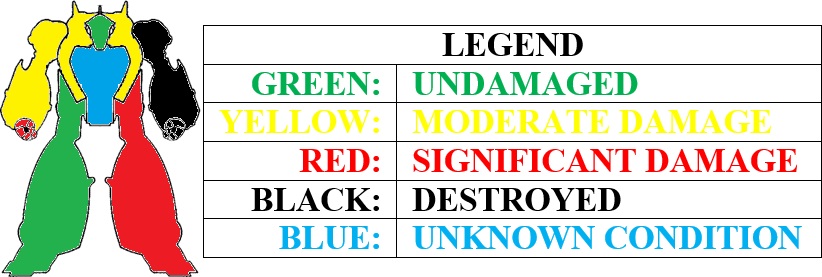 | |||||||||||||||||||||||||||||||||||||||||||||||||||||||||||||||||||||
